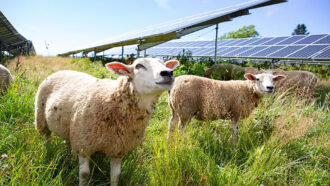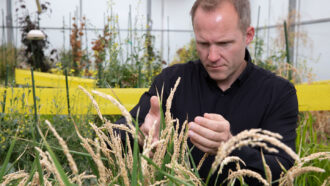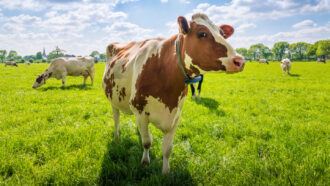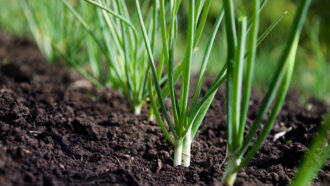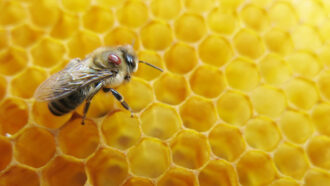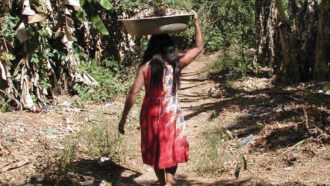Get ready to eat differently in a warmer world
Climate change is making crops less productive, foods less nutritious and farms weedier
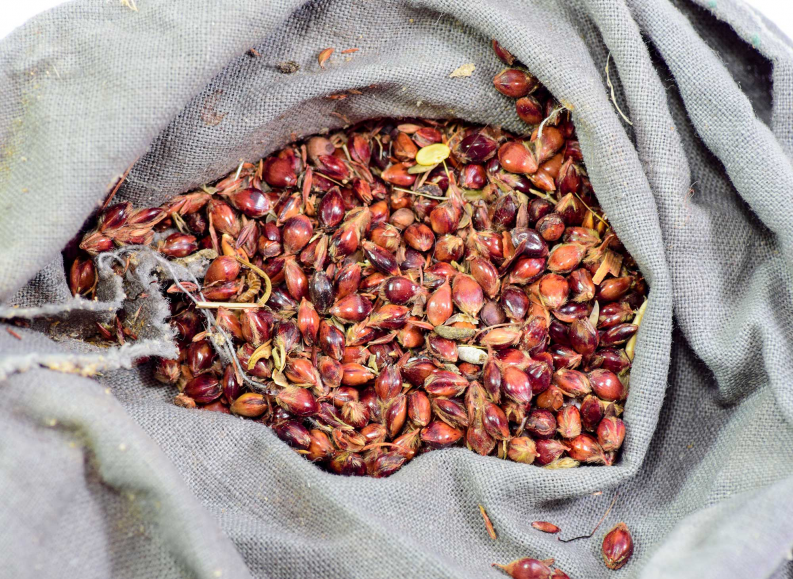
With climate change, people may have to depend on grains such as the sorghum (shown here) that are not now commonly found on our plates.
Leonid Eremeychuk/iStock/Getty Images Plus
By Ilima Loomis
This is the final installment in a 10-part series about the ongoing global impacts of climate change. These stories look at the current effects of a changing planet, what the emerging science suggests is behind those changes and what we all can do to adapt to them.
In the late summer of 2016, wheat growers in France realized something was wrong. Their harvest was smaller than usual — much smaller. The farmers were used to their yields — the amount of crops produced in their fields — being very consistent. Wheat yields usually changed by no more than 5 percent from one year to the next. But this year was different.
It wasn’t obvious right away, though, what the problem was.
There had been an unusually warm spell that winter. Later in the year, some intense rains had fallen. These events led to unexpected issues. The heavy rains, for instance, leached nutrients out of the soil. The heat and damp increased the spread of diseases. None of these issues seemed too bad as they were happening. But when it came time to harvest the wheat, yields across France were one-quarter (25 percent) lower than normal. In some regions, they were just half (50 percent) of what they had been.
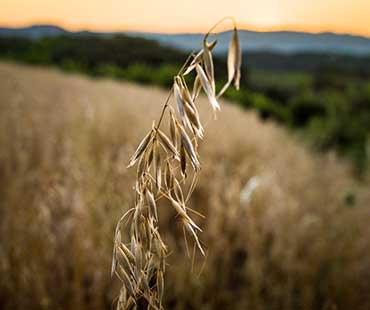
“That was amazing to me,” says Senthold Asseng. He’s works at the University of Florida in Gainesville, where he uses computers to analyze data and predict crop harvests. “It was a real warning that you don’t need to wait for a big shock like a heat wave or a drought. A shock to production could also come about by having three or four smaller changes that all come together in one season.”
France is a wealthy country. So it had other sources of grain and food. Other than the wheat farmers, few French people were affected. But in a poor country, such a huge drop in crop yields could worsen poverty — or even bring on a famine.
When people think about how their lives will be affected by climate change, they might imagine living in a world with shorter winters and longer summers. They might envision coastal cities losing ground to sea level rise. They might even expect more extreme weather, such as hurricanes or wildfires.
All of those effects have struck various parts of the world. But climate change is also affecting what we eat. With warmer temperatures and more pests, farms will produce less food. And farmers will have to work harder to grow what food they do bring to harvest. Some crops might even be less nutritious. We may eat less of foods that are vulnerable to climate change — such as wheat and corn — and more of those crops that can better tolerate drought. Think sorghum. (Mmmm … sorghum!)
Scientists are studying these issues and learning more about how climate change will affect food supplies. They’re also developing new crops and new growing techniques to help farmers adapt to the coming changes.
Turning up the heat
It’s hard to study how temperature changes will affect crops. Many factors influence crop growth. These include rainfall, sunlight, the quality of the soil, the amount of carbon dioxide in the air and the type of plants being grown. Scientists have been seeking ways to isolate the effect of temperature from all of those other factors. Some researchers do this with greenhouses or experimental fields of plants. Asseng, though, does this using a computer.
With a computer model, researchers can do experiments that would be difficult or impossible in real life. They can alter one factor, and keep all the others unchanged. They can go forward or back in time. Asseng helped develop a computer program to model the growth of plants. His team can now use this model to assess likely changes to crop yields on farms across the world.
Asseng and his team used this model to investigate how rising temperatures might affect harvests of wheat, rice, corn and soybeans. Worldwide, these four crops provide two-thirds of all calories that people eat.
Tweaking temperatures in the model turned up something very worrisome. A global warming of 1 degree Celsius (1.8 degrees Fahrenheit), his model showed, “leads to reductions in all the major crops.” Corn harvests would fall by 7 to 8 percent. Wheat would drop by 6 percent. Rice and soy yields would fall some 3 percent.
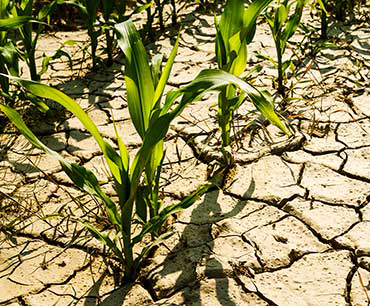
To check these findings, Asseng and a group of other scientists compared their results to four other studies done by different scientists. Those studies included other computer models, math analyses and harvests of crops grown in test fields. “All these different methods came up with the same numbers,” he says. That made him confident that temperature really can and will play a big role in the size of future harvests.
But the impact of temperature on crops might not be obvious to most people, at least right away. That’s because other factors might be aiding crop production at the same time. Those benefits can hide any effect of warming temperatures — at least for a while.
Asseng says Egypt is a good example of this. Worldwide, crop yields have been rising steadily for the past 50 years. Better farming techniques are responsible. But in Egypt, harvests have leveled off in the last 10 years, even as its farmers have made the same farming improvements. Drought can’t be blamed. Egyptian farmers irrigate their fields, so the crops aren’t getting less water.
Asseng believes rising temperatures are responsible.
Slowing the growth of food production can make it hard to feed a world where the population is increasing. And world populations are rising rapidly. Today there are 7.6 billion people on Earth. The United Nations predicts there will be 8.6 billion by 2030, and 9.8 billion by 2050. That’s a lot of mouths to feed.
“The changes are already there, but you often cannot see them,” Asseng says. “Yes, [crop] yields go up. But behind the scenes, someone is pushing the brakes,” he says. And in some places, such as Egypt, he argues, you can already see the impacts.
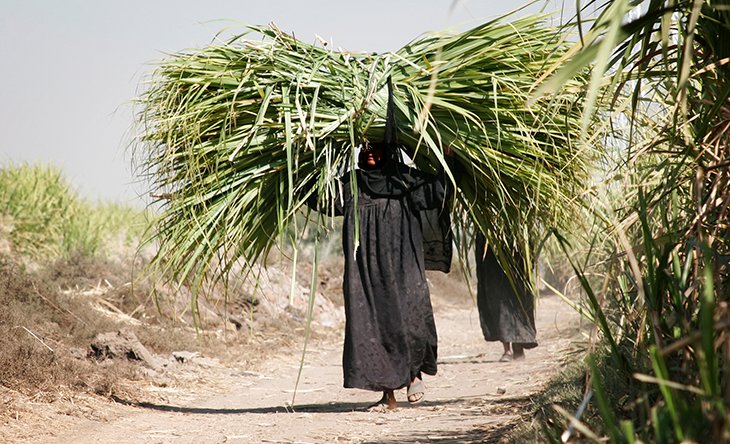
Changing soils
It’s not just temperatures and other features of climate that affect crop growth. Soil also plays a big role. “If you change the climate, you may also change the properties of the soil,” notes Lenny Winkel. An environmental geochemist, she works at ETH Zurich and at the aquatic research organization Eawag. Both are in Switzerland.
Wet, rainy areas have a lot of organic matter — largely carbon — in the soil. That’s because these wet places often have a lot of plants. When they drop leaves or die, their tissues break down in the moist environment. This adds compost — available nutrients — to the soil. But dry places have fewer plants. And as plant there die, they take longer to rot into compost.
If climate change leads some regions to become drier, she says, “you could also lose some organic matter in the soil.” That would lower the nutrients available to feed the next season’s crops.
Winkel studies the presence in soil of trace elements, such as selenium. Such elements show up in the environment in only tiny amounts. As an important micronutrient, selenium is something that people need in tiny quantities.
Not much is known about where selenium occurs naturally. So Winkel decided to try to map known amounts. From this she attempted to predict levels elsewhere in the world. Then her team looked to “find the link between [known] concentrations and environmental factors,” she says. “We found out that climate factors were really important.” That’s because one way selenium gets into the soil is through the breakdown of organic matter.
With this information, Winkel realized she could now predict how soil levels of selenium would change in a warming world. Using computer models of climate, she was able to add likely changes to her map that would reflect a warming environment. And, she now reports, “We saw that the change would be a loss of selenium in the soil.”
Of course, people don’t eat selenium out of the soil. The roots of plants mine it from the ground and carry it into their tissues. The next step to understanding this issue will be to study how a reduction of selenium in the soils affects levels of this micronutrient in food crops. “We can generally say that what happens in the soil is broadly reflected in the plants — but not in all cases,” Winkel says.
A coming flood of impacts
Another way climate change is affecting soil is through pollution. Joyce J. Chen works at Ohio State University in Columbus. There, she studies the economies of lower-income countries and tries to find policies and programs that can help them prosper. Her research has focused on how flooding can taint soils in Bangladesh.
This low-lying country on the eastern border of India is prone to flooding. As sea levels rise, storms and high tides can cause ocean water to surge inland, across coastal areas. Later, when low rainfall causes river levels to drop, more seawater flows inland from the mouths of rivers. This, too, floods these areas.
Saltwater floods contaminate drinking-water supplies. Even farm animals can sicken from drinking salty water. And salt can effectively poison farmland. Crops such as rice grow poorly in salty soils. So rice harvests fall where seawater flooding occurs. Many farm families respond, when this happens, by moving to cities. They try to seek work there when they can no longer raise crops on their salt-poisoned lands.
Such a situation “creates a double burden” for these people, Chen says. They not only need a new place to live, but their nation also suffers a potential reduction of food because fewer people are able to farm.
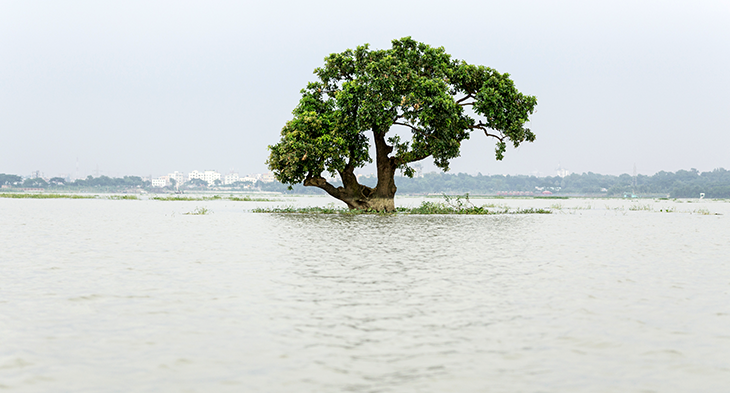
Learning from weeds
Climate change doesn’t just bring rising temperatures. It also brings rising levels of carbon dioxide. That sounds like good news for plants, which absorb carbon dioxide, or CO2, from the air. They use the carbon to build tissues. But it’s not that simple, says Lewis Ziska. He’s a plant physiologist, someone who studies the biology of plant tissues. He works at the U.S. Department of Agriculture’s big research center in Beltsville, Md.
“Not all plants are going to respond the same way to that change [in CO2],” he says. Many will yield crops that are less nutritious when grown in higher levels of CO2. Their protein levels, especially, will likely fall. Crops also may lose vitamins and micronutrients. In experiments, crop plants such as wheat, soy and rice did not seem to grow better in a CO2-rich environment.
What did grow better? Weeds.
“Many of the worst weeds in agriculture are already responding to this change,” Ziska notes. Crop plants could grow to smaller sizes or produce smaller fruits and fewer seeds in a future where they have to compete with more weeds. More pests and diseases may also plague plants in a warmer world.
One thing contributing to the problem is the lack of genetic diversity in modern crop plants. While there are thousands of varieties of weeds, each with different traits, most foods today come from monoculture farming. That means farmers only grow one type of crop. And those crops all have pretty much the same traits, based on breeding that restricted the particular genes that they host.
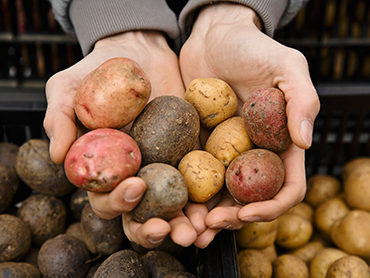
Genes for thriving in warmer or drier environments may be gone. Breeders might have sacrificed them in favor of varieties whose genes produce bigger fruits, more seeds or stronger stems. But those varieties may now need a constant and very comfortable environment. Change the climate and those plants may become sick or puny.
For instance, most French fries today are made from a single potato variety. “That’s great if the climate is stable,” Ziska says, “but not so great if the climate is changing.” If farmers instead grew several different potato varieties, some of them might adapt, even if many others did not.
“The positive side of the coin is that we can learn from weeds and use that to improve our own varieties of major cereals,” Ziska says. Cereal plants are species like rice, wheat, and corn or maize.
Ziska and his colleagues looked at “weedy” relatives of cereal grains, such as wild rices. These aren’t like the weeds that grow in your garden. They’re ancient or wild varieties of grains that have been domesticated by humans. The researchers planted different varieties in test fields. The scientists could change growing conditions, making those fields warmer, drier or wetter. They could also expose them to higher than normal levels of CO2 — levels that mimic what’s predicted to occur in the future. The researchers monitored how the plants responded. Then they studied the genes in those plants that performed best.
Some rice turns “chalky” when it grows in warmer temperatures or breathes in more CO2, they found. Its cellular structure is changed, giving it a more opaque color, and causing it to be tougher and less sticky when cooked. These rice grains are a poorer quality. They’re unappealing and don’t taste as good as regular rice, which lowers their value. By testing different types of rice and looking at each plant’s DNA, scientists could find the genes affecting chalkiness. They can now avoid rice varieties that inherited these genes when farmers look for ones likely to produce better crops in a world that will be warmer and/or have higher levels of CO2.
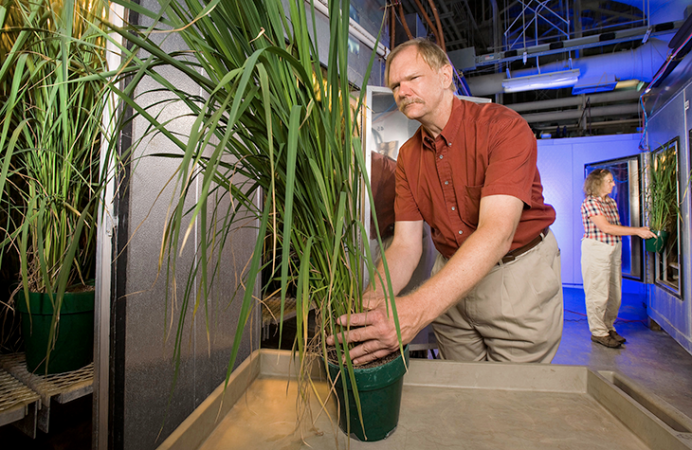
“We think that literally the answer lies in the weeds,” Ziska says. The wild relatives of crop plants are already adapting to Earth’s changing climate. Learning how they are doing that offers hope that plant scientists can learn from these genes “to modify current crop lines and potentially make them more adaptive to the change.”
One solution might involve tinkering with the genetics of existing crops, such as rice, to insert the genes of some weedy, but resilient, cousins. Such plants are known as genetically modified organisms, or GMOs. Another alternative: Scientists could breed plant species together to create new hybrids that combine the best traits of both. But Ziska hopes that the foods of the future might already be hiding in plain sight.
“I have nothing against GMOs. But I also want folks to recognize that evolution has been doing this for a while. And the last time I checked, there were over 100,000 different lines of rice,” he says. “How about we go check those out first and see what we can use that’s already available before we go moving genes around?”
Adapting what we eat
It can take 10 or 20 years to develop a new variety of wheat. But people don’t have to wait that long to change how they grow food. “At the field level right now, farmers are recognizing that things are changing, and they’re adapting,” Ziska says.
“They’re planting earlier. Or they’re using a different method to plant faster,” he says. They may be using different equipment in their fields or trying different methods to help crops grow.
The way Ziska sees it, we cannot stop climate change in our lifetimes. It’s got so much momentum, all we can hope to do is to slow it down. And even that may take a while to manage. “We’re not going to suddenly shut down the amount of CO2 going in the air,” he says. “We’ve got to adapt, and we’ve got to adapt quickly.”
The good news is that looking at the problem of food supplies could help more people understand the importance of climate change. Early in his career, Ziska noticed that most people were not interested when he talked about how climate change was affecting the environment. But when he showed them how it could affect food supplies, they suddenly sat up and listened.
“It went from 10 percent of the audience caring to 90 percent of the audience caring,” he says. “When it becomes personal, then you care. And I can’t think of anything more personal than food.”
